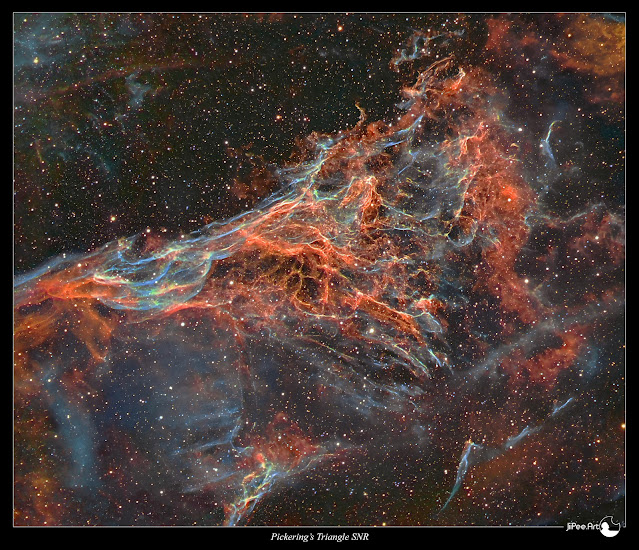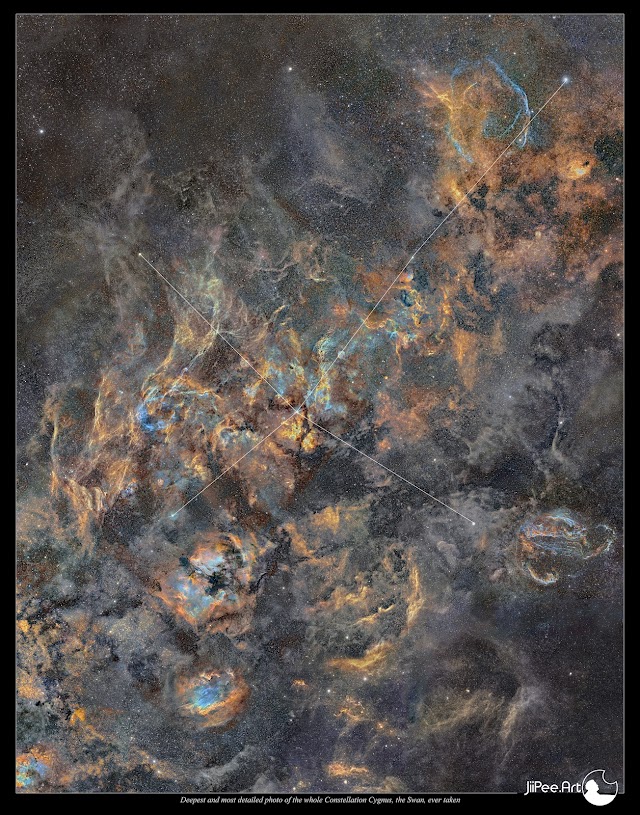COPYRIGHT, PLEASE NOTE
Sunday, February 16, 2025
New Tool, a Powerful Dell Precision 7875 Workstation
Workstation computers from Dell are really well-built and come with excellent next-business-day onsite service. I have been using them for a couple of decades for my work. My previous workstation served me well for almost nine years—these kinds of computers do not age as fast as normal consumer PCs.
My old Dell workstation has two ten-core Xeon processors, 128GB of memory, and a decent graphics card. Since I work with 4K and 8K videos, 3D graphics, and run AI locally, my old workstation has become far too slow. It goes to my observatory computer, little overkill for telescope and camera control but works well there.
The new Dell Precision 7875 Workstation features a 96-core AMD Threadripper Pro processor (3.2 – 5.1 GHz), 512GB of RAM, and a 20GB NVIDIA RTX 4000 Ada graphics card. It comes with a standard three-year next-business-day onsite service in case anything goes wrong.
My new display is also from Dell—a 40-inch 21:9 curved Thunderbolt hub monitor with a stunning 5K resolution and a 120Hz refresh rate. The curve in the monitor is perfect for correcting perspective distortion, ensuring that straight lines remain visually straight.
I also use an Ergotron monitor arm, so no desk space is wasted, allowing me to position the large display at the optimal distance and orientation with ease
Thursday, February 6, 2025
Pickering's Triangle, Resurrection
This is not exactly a new image of Pickering's Triangle, but it is a completely new revision of it. I have photographed this complex-looking region of the Veil Nebula supernova remnant in Cygnus multiple times over the decades. In this latest revision, I have gathered all my exposures of the target and combined them into a new, most detailed version yet.
PICKERING'S TRIANGLE RESURRECTION
Click for a full size, 2700x2300 pixels
sulfur=red, hydrogen=green and oxygen=blue
Click for a full size, 2000x2000 pixels

Visual color version of Sh2-115 glows mostly in red from a light emitted by an ionized elements,
sulfur=red, hydrogen=red and oxygen=blue, this combination is very close to a natural color palette
 This massive mosaic, composed of over 300 panels and around 700 hours of exposure time, showcases the entire constellation of Cygnus, the Swan. The Veil Nebula supernova remnant, including Pickering's Triangle, is visible in the lower right area, slightly off-center. Additionally, two more supernova remnants appear in the image: G65.2+5.7 SNR in the upper right corner and W63, located slightly left of center, seen as a bluish ring formation.
This massive mosaic, composed of over 300 panels and around 700 hours of exposure time, showcases the entire constellation of Cygnus, the Swan. The Veil Nebula supernova remnant, including Pickering's Triangle, is visible in the lower right area, slightly off-center. Additionally, two more supernova remnants appear in the image: G65.2+5.7 SNR in the upper right corner and W63, located slightly left of center, seen as a bluish ring formation.Link to the my blog post about this massive photo:
https://astroanarchy.blogspot.com/2021/12/cygnus-mosaic-gets-large.html
This new revision of Pickering's Triangle has a cumulative exposure time of approximately 70 hours. I have compiled all the long focal length data I captured over the years into this single deep image. Various optical configurations and focal lengths were used during this time.
Some of the data was captured using my old MEADE LX200 GPS with a 0.63 focal reducer, a QHY9 camera, and a Baader narrowband filter set. Data from 2015 to 2023 was acquired with a Celestron EDGE HD 11" telescope, an Apogee Alta U16 camera, and an Astrodon narrowband filter set. The most recent data, captured in 2024, was taken with a Celestron EDGE HD 14" telescope, an Apogee Alta U9000M camera, and an Astrodon narrowband filter set. There is also some dimm background data shot with Tokina AT-x 300mm f2.8 camera optics.
Wednesday, January 29, 2025
A Cosmic genesis, IC 410 in Auriga
UPDATE
My photo of IC410 ended up to the PetaPixel, world's leading independent photography publication.
This must be one of my best photos of IC410 so far, and I'm very pleased with the result.
I’ve been shooting this target over and over again for decades, and every time it has shown me something new. (There are links to older versions of IC410 at the end of this blog post.)
This has been a fascinating object for me, as it holds great symbolism. Overall, this nebula resembles a microscopic photo of human fertilization, where new life is about to be born, and the germ cells are meeting each other.
New things are being born in this photo as well, but not life as we know it. At the tips of those tadpole-like formations, the gas is collapsing, and new stars are beginning to form. For scale, those tadpoles are about ten light-years long and located about 10.000 light-years away from us.
In fact, they are the second generation of stars in this nebula. The first group was the open cluster of stars at the center of the image, NGC 1893. This group of stars is also responsible for the appearance of the entire nebula complex. The radiation pressure from the stars shapes the gas and causes it to glow by ionizing the elements within it. This same radiation pressure also causes the gas to collapse, starting the process of second-generation star formation in the nebula.
The seeing was very good in my conditions, with an FWHM of 1.6 (typically it's between 2.2 - 3.0). The total exposure time is around 30 hours, collected over several nights during a three-month period between the end of 2024 and the beginning of 2025
A Cosmic Genesis, IC 410
Click for a full size, 2700x2400 pixels
sulfur=red, hydrogen=green and oxygen=blue
Click for a full size, 2100x2100 pixels
sulfur=red, hydrogen=red and oxygen=blue, this combination is very close to a natural color palette
Click for a full size, 2900x1600 pixels
Info about this massive photo can be seen in this Blog post:
https://astroanarchy.blogspot.com/2020/03/the-grande-mosaic-of-auriga.html
Info about this massive photo can be seen in this Blog post:
https://astroanarchy.blogspot.com/2020/03/new-photo-deep-in-to-darkness.html
My older photos of the IC 410 in Chronological Order
2008, my first photo of IC 410, https://astroanarchy.blogspot.com/2008/03/ic-405-410-with-color.html
2008, my second tryout with IC 410, https://astroanarchy.blogspot.com/2008/11/ic405-ic410-in-hst-hubble-space.html
2010, version, https://astroanarchy.blogspot.com/2010/01/ic-410-cosmic-fertilization.html
2012, version, https://astroanarchy.blogspot.com/2012/12/a-cosmic-fertilization.html
2015 version, https://astroanarchy.blogspot.com/2015/02/new-photo-ic-410-in-auriga.html
2015, 3D studies of IC410, https://astroanarchy.blogspot.com/2015/07/an-experimental-3d-study-of-emission_28.html
2020, a wide field mosaic, https://astroanarchy.blogspot.com/2020/03/new-photo-deep-in-to-darkness.html
2020, IC 410 as apart of an interesting mosaic version, https://astroanarchy.blogspot.com/2020/03/the-birth-of-venus.html
IC 410, a Photo from 2012 vs 2025 Version of it
Click for a full size, 1500x1500 pixels

I noticed some movement in a one star, it's marked at upper right
There are other small movement at stars but it's just due to a different optical curvatures between two optical configurations.
The details in the tadpoles are much clearer in the new version, the dark nebulae now show fine structures, and the gas complex at the lower left—barely visible in the 2012 photo—now reveals beautiful details. The amount and clarity of the stars are amazing in the new version, along with many other small features that have now been captured.
About processing this Photo
I processed the image extra carefully to avoid losing any delicate details in both the bright and dark areas of the nebula complex. For example, I hadn't noticed the gas formations in the lower left end of the large crescent-shaped arch in my previous photos.
The total exposure time for this photo is 32 hours. Out of the 20 hours used for hydrogen-alpha (H-α) light, only about five had good seeing conditions. I created two separate stacks for H-α data—one from exposures taken under good seeing conditions and another from exposures taken under less favorable conditions. I processed both stacks separately using the exact same method. In the final step, I merged them into a single long-exposure image.
The method I used was somewhat unorthodox. In Photoshop, I applied the exact same procedure to both images to remove the brighter high-signal noise elements in photo. As a result, I ended up with two relatively featureless images of hydrogen-alpha emission.
In the next step, I reconstructed an image containing only the removed details from the photo taken under good seeing conditions. I did this by layering the featureless image with the original image containing all the details. Then, I changed the layer mode to "Difference" and merged the layers. I simply tossed away the brighter parts from the image taken under poor seeing conditions.
Next, I stacked these two featureless images using CCDStack2. Finally, I reintroduced the brighter details from the good-seeing image into the newly stacked featureless image using the linear add mode in Photoshop layers.
As a result, I achieved strong signal for the dimmer parts of the image while maintaining excellent detail in the brighter areas. When I added the brighter details back into the final image, the noise level remained extremely low due to the strong background signal.
O-III,21x 1200 s, binned 2x2 = 7h
A single calibrated 20 min exposure of H-alpha, Bin 1x1
Friday, January 24, 2025
Star Pointers
I have made an alternative composition out of my photo of Cederblad 214. There are several pillar like structures in the nebula and they all are pointing to the open cluster NGC 7822 due to solar wind, a radiation pressure. Original photo can be seen here with technical details: https://astroanarchy.blogspot.com/2025/01/cederbald-214.html
CEDERBLAD 214 AND THE STAR POINTERS
Click for a large image, 1600 x 2300 pixels




















